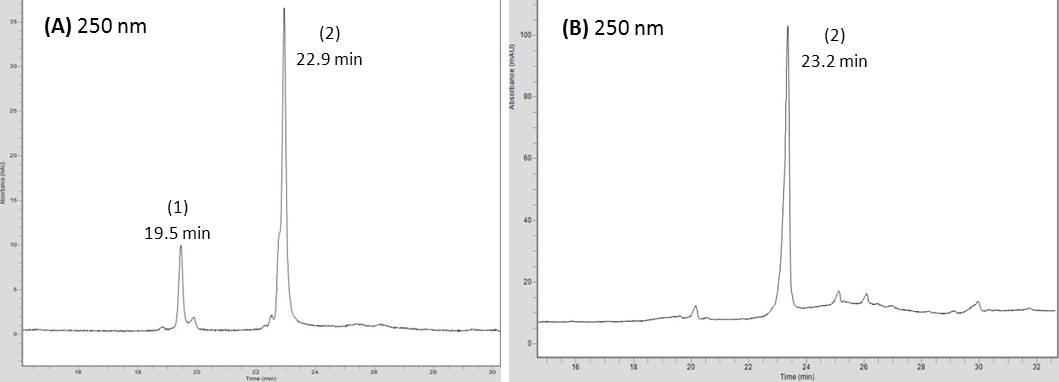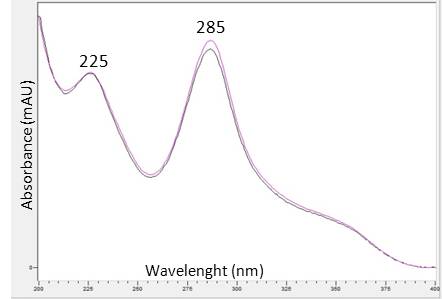|
Introduction
The assignments of the Bibliothèque nationale de France (BnF) are collection, conservation and communication of the national heritage. The study and identification of natural colorants extracted from historical textile collections can give valuable information as to where, when and how textiles were created and dyed. It can also help the improvement of restoration and conservation treatments applied to historical objects. During this internship seven colorants were studied: three red colorants (lac dye, kermes and logwood), three yellow colorants (safflower, weld and dyer’s broom) and one blue colorant (indigo). The aim was to build a database which could be used as reference data for the future studies of the BnF’s collections.
Experimental conditions
Each colorant was prepared from raw material (plants or insects) following a specific protocol to obtain dye baths and then dyed pieces of wool. Extractions from fibers were then carried out with a mixture of formic acid and methanol (5:95 v/v). Colorants were analysed from both dye baths and dyed wools extracts by high performance liquid chromatography combined with a diode array detector. Analyses were performed on a chromatographic line Flexar Plus (from PerkinElmer) composed of a degasser, a quaternary pump, an autosampler, and a Peltier effect oven. The column used was an apolar Nucleosil C18 5µm, 250 x 4.6mm, thermostated to 35°C. A mixture of acidified water and acetonitrile (20:80 v/v) was used as mobile phase, in compliance with a precise elution gradient. As for the DAD detector, two wavelengths, 250 and 450 nm, along with a reference wavelength at 500 nm were chosen.
Results
Analyses were combined with bibliographic research in order to detect and identify the main constituents of the colorants. Thanks to experimental results (retention times and UV/Visible spectra), bibliographic resources and reference compounds from the current database, constituents of some colorants were identified, such as laccaic acids in lac dye and kermesic acid in kermes. Two different laccaic acids, already entered in the database, were detected and identified in the dye bath of lac dye: laccaic acid 1 (19.5 min) and laccaic acid 3 (22.9 min). Only the laccaic acid 3 is present in the fibers extract at 23.2 min (figure 1). A comparison between the experimental spectrum of laccaic acid 3 and the spectrum from the database is shown in figure 2. For other colorants, particularly the yellow ones, peaks were detected but their identification was not always possible when based only on bibliographic resources. The analysis of indigo in the chosen conditions did not give usable information to spot its main constituents. Both analytical and extraction methods should be adapted in order to obtain accurate results for this colorant.
Conclusion
The analytical method gave conclusive results for red colorants, particularly for lac dye and kermes, and enabled us to identify and add their main constituents to the database. However, in the case of yellow dyes, uncertainties remain concerning the identification of the constituents. The analysis of the blue dye, indigo, did not give exploitable information and should be adapted to clearly spot its constituents. To complete this study and confirm some results, it could be interesting to analyse and add more reference compounds to the current database.
|
|

Figure 1 – Chromatograms obtained by HPLC analyses of lac dye samples at 250 nm.
(A) Chromatogram obtained by HPLC analysis of dye bath. Peak (1) corresponds to laccaic acid 1 and peak (2) to laccaic acid 3. (B) Chromatogram obtained by HPLC analysis of dyed fibers extract.

Figure 2 – Experimental UV/Visible spectrum of laccaic acid 3 (black curve) compared to laccaic acid 3 spectrum present in the database (pink curve), from 200 to 400 nm. The two spectra are identical at 98%.
|




